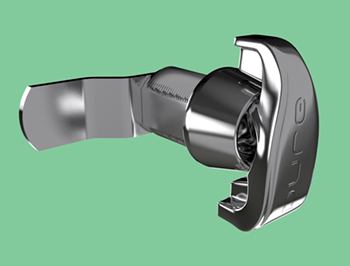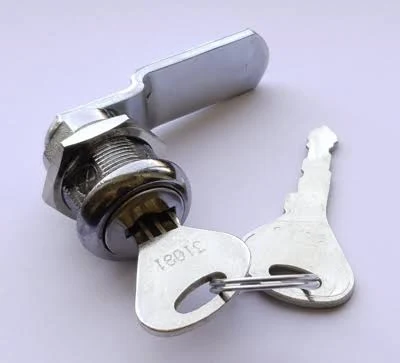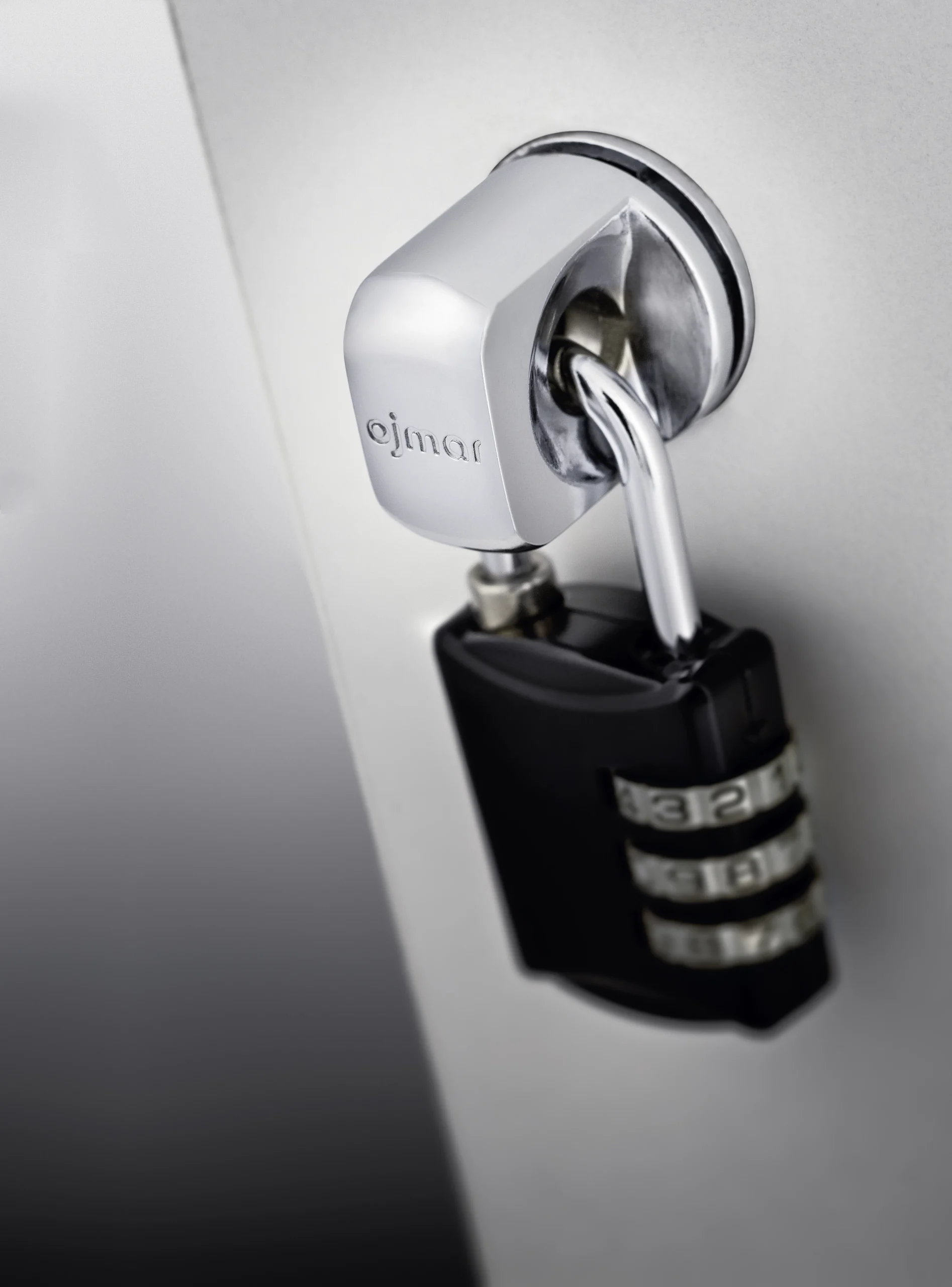Locker Locks: Selecting the appropriate security system for your lockers can significantly impact the overall functionality of your facility. Therefore, understanding the differences between key-operated and swivel hasp locker locks becomes essential for making an informed decision. Both systems offer unique advantages whilst presenting distinct limitations that facility managers must carefully consider.

Understanding Locker Lock Fundamentals
Modern facilities require robust security solutions that balance convenience with protection. Consequently, locker locks have evolved to meet diverse requirements across educational institutions, healthcare facilities, leisure centres, and corporate environments. Each locking mechanism serves specific purposes whilst addressing particular security concerns.
The Importance of Proper Lock Selection
Choosing suitable locker locks directly affects user experience and facility management efficiency. Furthermore, the wrong selection can lead to increased maintenance costs, security vulnerabilities, and user frustration. Professional suppliers like Total Locker Service emphasise the importance of matching lock types to specific facility requirements and user demographics.
Key-Operated Locker Locks: Traditional Security Solutions
Key-operated locker locks represent the conventional approach to locker security. Additionally, these systems have proven their reliability across numerous applications over many decades. Their straightforward operation makes them suitable for various environments where users require secure, individual access to storage spaces.
Advantages of Key-Based Locker Locks
Key systems offer several compelling benefits that make them attractive for many facilities. Firstly, they provide excellent security levels when properly maintained and managed. Users receive individual keys, ensuring exclusive access to their designated storage space.
Robust Physical Security
Key-operated locker locks deliver superior physical protection compared to many alternative systems. Moreover, high-quality key locks feature hardened steel components and complex pin configurations that resist tampering attempts. The mechanical nature of these locks eliminates electronic vulnerabilities that could potentially compromise security.
No Power Requirements
These locker locks operate entirely through mechanical means, requiring no electrical power or battery replacement. Subsequently, facilities avoid ongoing electrical maintenance costs and concerns about power failures affecting lock functionality. This independence from power sources makes key locks particularly suitable for outdoor applications or areas with unreliable electricity supply.
Cost-Effective Initial Investment
Key-operated systems typically require lower upfront costs compared to sophisticated electronic alternatives. Furthermore, the simple mechanical construction keeps replacement parts affordable and readily available. Many facilities find this cost structure attractive, particularly when outfitting large numbers of lockers simultaneously.
User Familiarity and Ease of Use
Most users understand key-operated mechanisms intuitively, reducing the need for extensive training or instruction. Additionally, the physical nature of keys provides tactile feedback that users find reassuring. This familiarity reduces user errors and support requests, benefiting facility management operations.
Limitations of Key-Based Systems
Despite their advantages, key-operated locker locks present certain challenges that facility managers must address. Understanding these limitations helps in making informed decisions about lock selection and management strategies.
Key Management Challenges
Lost keys represent the primary challenge with key-operated locker locks. Consequently, facilities must maintain master key systems and lockout procedures for emergency access. The administrative burden of key replacement, tracking, and security management can become substantial in large facilities.
Security Vulnerabilities
Keys can be copied, shared, or stolen, potentially compromising locker security. Moreover, worn keys or locks may become easier to force or manipulate over time. These vulnerabilities require ongoing monitoring and periodic lock replacement to maintain security standards.
Maintenance Requirements
Mechanical locker locks require regular lubrication and adjustment to ensure smooth operation. Furthermore, heavy usage can cause internal components to wear, leading to key sticking or lock failure. Professional maintenance becomes essential for preserving lock functionality and user satisfaction.

Swivel Hasp Locker Locks: Modern Convenience Solutions
Swivel hasp systems represent a contemporary approach to locker security, designed for environments where users require temporary access without key management concerns. These locker locks feature rotating mechanisms that secure the locker door whilst allowing users to attach their own padlocks for personalised security.
Advantages of Swivel Hasp Systems
Swivel hasp locker locks offer several benefits that make them particularly suitable for certain facility types. Most importantly, they eliminate key management responsibilities whilst providing users with security control.
User-Controlled Security
Swivel hasp systems allow users to provide their own padlocks, giving them complete control over their security. Additionally, users can select padlock types that match their security preferences and budget constraints. This flexibility particularly appeals to facilities serving diverse user groups with varying security requirements.
No Lost Key Issues
These locker locks eliminate traditional key management problems since users maintain responsibility for their own padlocks. Therefore, facilities avoid costs associated with key replacement, lock changes, and emergency lockout services. This reduction in administrative burden significantly benefits facility management operations.
Quick Installation and Retrofitting
Swivel hasp systems install easily on existing lockers without requiring extensive modifications. Furthermore, the simple mounting process makes them ideal for retrofitting older locker installations. This adaptability helps facilities upgrade security without replacing entire locker systems.
Durability and Weather Resistance
Quality swivel hasp locker locks feature robust construction that withstands harsh environmental conditions. Moreover, stainless steel or coated metal components resist corrosion and maintain functionality in humid or outdoor environments. This durability makes them suitable for swimming pool areas, outdoor facilities, and industrial settings.
Limitations of Swivel Hasp Systems
Swivel hasp locker locks also present certain disadvantages that facility managers must consider carefully. These limitations may make them unsuitable for specific applications or user demographics.
Dependence on User-Provided Security
The security level depends entirely on the padlocks that users choose to bring. Consequently, some users may select inferior padlocks that compromise overall security. Additionally, users who forget their padlocks may be unable to secure their belongings effectively.
Potential for Inconsistent Security
Different padlock types and quality levels create inconsistent security across the facility. Furthermore, some users may not understand proper padlock selection, potentially choosing inadequate security solutions. This inconsistency can create vulnerabilities that affect overall facility security.
User Inconvenience Factors
Users must remember to bring appropriate padlocks, which some may find inconvenient. Moreover, carrying padlocks adds to the items users must manage when using the facility. This additional requirement may deter some users or create negative experiences.
Maintenance and Cleaning Challenges
Swivel mechanisms require regular cleaning to prevent dirt and debris accumulation that could impair operation. Additionally, the exposed nature of hasp systems makes them more susceptible to damage from heavy use or intentional vandalism.
Comparative Analysis: Key vs Swivel Hasp Systems
Comparing key-operated and swivel hasp locker locks requires examining multiple factors that affect their suitability for different applications. Each system excels in particular areas whilst presenting unique challenges that facility managers must address.
Security Considerations
Key-operated locker locks generally provide more consistent security levels across all lockers within a facility. However, swivel hasp systems can achieve superior security when users select high-quality padlocks. The trade-off between consistency and potential maximum security levels influences lock selection decisions.
Cost Analysis
Initial installation costs favour key-operated systems for new locker installations, particularly when ordering locks in large quantities. Conversely, swivel hasp systems offer advantages for retrofitting existing lockers due to their simpler installation requirements. Long-term costs vary depending on key replacement needs versus hasp mechanism maintenance requirements.
User Experience Factors
Key systems provide consistent user experiences but require key management responsibility. Meanwhile, swivel hasp systems offer user autonomy but require additional preparation and equipment. The target user demographic significantly influences which approach delivers superior user satisfaction.
Application-Specific Recommendations
Different facility types benefit from specific locker lock configurations based on their operational requirements and user characteristics. Understanding these applications helps facility managers select appropriate systems for their particular circumstances.
Educational Institutions
Schools and universities typically benefit from key-operated locker locks due to the need for administrative control and student supervision. Additionally, the controlled environment allows for effective key management systems. However, physical education facilities within schools might prefer swivel hasp systems for temporary use scenarios.
Fitness and Leisure Facilities
Gyms and leisure centres often favour swivel hasp locker locks because users visit temporarily and prefer controlling their own security. Furthermore, the diverse user base makes key management challenging. According to Total Locker Service, leisure facilities require robust, corrosion-resistant solutions that withstand humid environments.
Workplace Environments
Corporate facilities typically implement key-operated systems for employee lockers due to security requirements and administrative control needs. Moreover, long-term assignments make key management more feasible. However, visitor areas might benefit from swivel hasp systems for temporary storage needs.
Healthcare Facilities
Medical environments require key-operated locker locks for staff lockers to maintain security standards and access control. Additionally, healthcare facilities need systems that support cleaning protocols and infection control measures. The controlled environment makes key management systems viable and necessary for security compliance.
Installation and Maintenance Considerations
Proper installation and ongoing maintenance significantly affect the performance and longevity of both key-operated and swivel hasp locker locks. Understanding these requirements helps facilities plan for total ownership costs and operational considerations.
Installation Requirements
Key-operated locker locks require precise alignment and proper door preparation for optimal function. Furthermore, installing multiple locks simultaneously requires coordination to ensure consistent operation across all units. Professional installation often proves necessary for achieving reliable results.
Swivel hasp systems typically install more easily but require attention to mounting hardware and alignment. Additionally, the exposed mounting points must be properly sealed to prevent corrosion in humid environments. Quality installation ensures smooth operation and extended service life.
Maintenance Protocols
Regular maintenance keeps both types of locker locks functioning properly and extends their service life. Key-operated systems require periodic lubrication of internal mechanisms and adjustment of strike plates. Additionally, key duplication and replacement procedures require careful management.
Swivel hasp mechanisms need regular cleaning to remove accumulated dirt and debris. Moreover, the pivot points require occasional lubrication to maintain smooth operation. Inspection for damage or wear helps prevent failures that could compromise security.
Future Trends and Technology Integration
The locker lock industry continues evolving with technological advances and changing user expectations. Understanding these trends helps facility managers prepare for future requirements and make investment decisions that remain viable long-term.
Smart Lock Integration
Electronic locker locks increasingly incorporate smart features like mobile app control, usage tracking, and remote management capabilities. However, traditional mechanical systems maintain advantages in reliability and cost-effectiveness for many applications.
Hybrid Solutions
Some manufacturers now offer combination systems that blend key-operated convenience with electronic features. These solutions attempt to capture benefits from multiple approaches whilst minimising individual system limitations.
Conclusion: Making the Right Choice for Your Facility
Selecting between key-operated and swivel hasp locker locks requires careful consideration of facility requirements, user characteristics, and operational constraints. Key systems excel in controlled environments where administrative oversight supports effective key management. Conversely, swivel hasp systems work well for temporary use scenarios where users prefer controlling their own security.
Both locker lock types can provide excellent security when properly selected, installed, and maintained. The decision ultimately depends on matching system characteristics to specific facility needs and user expectations. Consulting with experienced suppliers like Total Locker Service helps ensure optimal lock selection and implementation.
Successful locker security depends not only on choosing appropriate locker locks but also on supporting them with proper installation, maintenance, and management procedures. By understanding the merits and limitations of each system, facility managers can make informed decisions that deliver long-term satisfaction and security for their users.
Consider your facility’s unique requirements carefully, evaluate both immediate and long-term costs, and select locker locks that align with your operational goals and user needs. This thoughtful approach ensures your investment in locker security delivers optimal value and performance for years to come.
